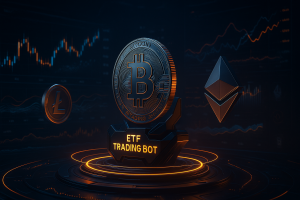How to set up the trading bot

Automation is steadily becoming part of everyday life. Even in trading – especially in financial markets – trading bots are increasingly used: specialised programmes capable of buying and selling assets automatically according to predefined algorithms. Setting up such a bot requires attention to detail, an understanding of trading principles, and technical proficiency.
First, you need to choose a platform or service on which your trading bot will operate. There are various options – from ready-made cloud solutions to the possibility of installing and configuring the code on your own server. Beginners are better off starting with simpler platforms that offer user-friendly interfaces and built-in strategy templates.
The next step is to connect your bot to an exchange. To do this, register on your chosen trading platform and obtain API keys. These keys allow the bot to interact securely with your account, executing trades on your behalf. It’s vital to keep these keys confidential and never share them with anyone.
Once the technical setup is complete, the crucial stage begins – configuring your trading strategy. The strategy defines how the bot will make buy and sell decisions. It may be something simple – for instance, buying when the price drops by 5% and selling when it rises by 7% – or more complex algorithms using technical indicators such as moving averages or RSI. Some platforms allow backtesting – testing a strategy against historical data to assess its performance before live trading.
It’s also important to set loss limits (stop-losses) and profit targets (take-profits) to manage risk. A well-tuned bot not only follows the strategy but also protects a trader’s capital from excessive drawdowns.
Finally, once the bot is running, it’s essential to monitor its performance regularly. Even the smartest programme can fail, especially when the market moves too fast. Many traders also use alert systems and automated reports to stay informed about what their bot is doing.
A trading bot can react to market signals instantly – far faster than a human can. This is crucial in highly volatile markets, where prices can shift within seconds.
A single person cannot trade dozens of instruments simultaneously – but a bot can. This opens up the possibility of working with multiple assets at once and increasing potential profits.
In conclusion, setting up a trading bot is not merely a technical task – it’s an art that combines programming, data analysis, and financial knowledge. When configured properly, a bot can become a reliable assistant, trading efficiently and tirelessly. But it’s important to remember: automation doesn’t replace thinking – it amplifies it.
Category news: Product and Bot Features
-

Bot for trading goods
In an era of rapidly advancing digital technology, businesses are increasingly turning to automated solutions that simplify and accelerate workflows. One such solution is trading bots – programs capable of replacing or complementing human labor in the sales process. Their integration into product trading offers a number of substantial advantages that significantly enhance business efficiency. […]
-

Real-Time Trading Bot
Real-time trading bots connect directly to trading platforms via API. They receive up-to-the-second data on prices, volumes, supply and demand, and use predefined algorithms to execute trades. These algorithms can be simple – for example, buying when the price drops and selling when it rises – or highly sophisticated, incorporating technical analysis, artificial intelligence, or […]
-

ETF Trading Bot
Thanks to rapid technological development, investing is gradually shifting from a domain reserved for professionals to an area of widespread public interest. Exchange-traded funds (ETFs), in particular, have grown extremely popular, offering diversification, transparency, and ease of purchase. Against this backdrop, a new tool is emerging – an ETF trading bot. ETF funds, or exchange-traded […]
-

Algorithmic trading bot
The use of trading bots in algorithmic trading has become a true breakthrough in the financial world. These intelligent systems offer a range of significant advantages, which is why they are increasingly replacing manual trading and opening up new horizons for market participants. Algorithmic trading is a method of automated buying and selling of assets […]
Latest news
-

Bot for trading goods
In an era of rapidly advancing digital technology, businesses are increasingly turning to automated solutions that simplify and accelerate workflows. One such solution is trading bots – programs capable of replacing or complementing human labor in the sales process. Their integration into product trading offers a number of substantial advantages that significantly enhance business efficiency. […]
-

SHIB
SHIB, or Shiba Inu, is a cryptocurrency that emerged in 2020, inspired by the popular meme coin Dogecoin. It quickly caught the attention of the crypto community thanks to its extremely low price per token and a marketing strategy centered around social media and fan engagement. Although SHIB was initially conceived as a “joke,” its […]
-

Real-Time Trading Bot
Real-time trading bots connect directly to trading platforms via API. They receive up-to-the-second data on prices, volumes, supply and demand, and use predefined algorithms to execute trades. These algorithms can be simple – for example, buying when the price drops and selling when it rises – or highly sophisticated, incorporating technical analysis, artificial intelligence, or […]
-

ETF Trading Bot
Thanks to rapid technological development, investing is gradually shifting from a domain reserved for professionals to an area of widespread public interest. Exchange-traded funds (ETFs), in particular, have grown extremely popular, offering diversification, transparency, and ease of purchase. Against this backdrop, a new tool is emerging – an ETF trading bot. ETF funds, or exchange-traded […]

